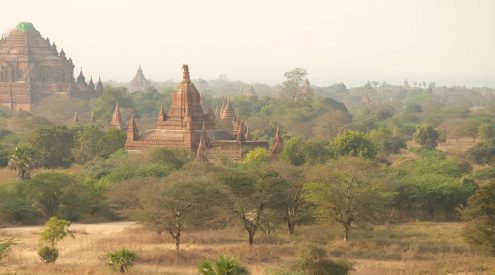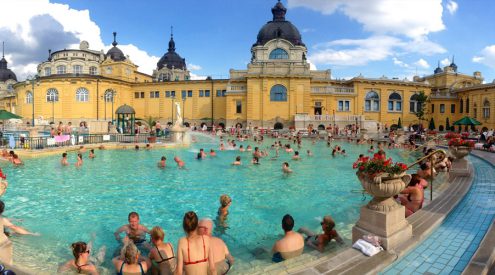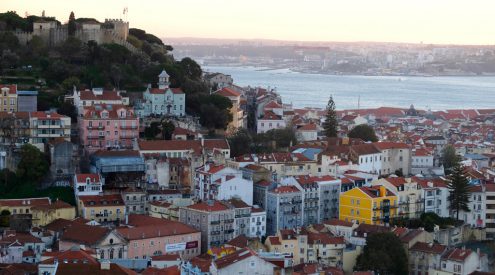Alice Springs (also affectionately referred to as “˜The Alice’), in the Red Centre is our next stop and we’ve decided to make the trip interesting – we’re catching one of the most famous trains in the country: The Ghan. Considering that we’ll be travelling through sparsely populated semi-arid desert almost all the way, this is probably also the safest option. As the train pulls out of the station in Adelaide, we wave good-bye to the lush green hills of South Australia, ready to experience the fierce outback and its red desert sands …
Arriving at ‘The Alice’
We quickly discovered that our preconceived ideas about this desert had been rather misguided. Don’t let the name fool you: there aren’t any springs around this Alice Springs, it was simply discovered after a particularly heavy rainstorm. A few days later all the water had gone, but the name stuck. Sure, The Alice is dry and wonderfully hot for August, but it’s definitely not the arid wasteland we were anticipating. And to be honest, the little town has got a lot going for it! Western-inspired bars, tree-lined arcades and a relaxed backpacker-vibe make Alice Springs altogether something different.
Of course the real reason people visit Alice Springs is that it’s the best point from which to visit what is possibly Australia’s most famous landmark: Ayers Rock – or Uluru, as it is locally named. Which is exactly why we’re here; and what better way to experience Uluru that a weekend camping trip. Even before the sun is up, we’re already on our way: 20 excited campers from all over the world, and one rooky guide – the only local.
On our first day we travel over 700 km to reach King’s Canyon, a spectacular landmark. Our first of many hikes, and arguably the most challenging: to really appreciate the canyon you need to get onto the walls that surround the canyon, which requires a more than 300 m rise at practically 45°. Which is easy, until you consider that it’s almost 30° outside and we’re about as fit as two rocks. Oh, and the climb is called “˜Heart Attack Hill’. The rest of the 6 km walk is breathtaking: taking in the crumbling sandstone formations and sheer cliff faces – always at a good distance from the edge! The Garden of Eden at the farthest point of the loop is a magnificent surprise: a quenching oasis that always holds water – even in the driest summer. The walk around this incredibly beautiful canyon still evokes one reaction; it is so very humbling (really beeeg natural wonders like these usually make me feel really tiny, temporary and trivial). It would not be the first time this weekend that I’d feel this way.
Kata Tjuta
Our next natural wonder to walk about was Kata Tjuta. I’ll try my best to describe this phenomenon: 36 boulders that seem to have crashed into the earth. At the highest point, these “˜boulders’ are almost 550 m high. In layman’s terms and a nutshell, these rock formations were formed by thousands of years of erosion. Throw in an ice age at some point, an earthquake, and some more erosion and you get these fascinating formations. You can actually see that the rock is made up of millions of smaller rocks and sediment that have been crushed into a new formation. To me, Kata Tjuta looks like giant round chocolate chip cookie planets that plummeted into the earth. Walking between these mindboggling mounds leaves you with a new perspective and with renewed respect for the aboriginal peoples who hunted and lived in this sacred site.
Naturally our guide keeps the best for last, and we only get to visit Uluru on our last afternoon. The stats around this massive monolith are astounding; a circumference of 9.4 km and said to be six km long (only about 350 m of this is visible above the surface of the earth), and it’s actually positioned upright, like a colossal carrot. Kata Tjuta and Uluru were formed by the same natural process; you can even see Kata Tjuta from Uluru.
Uluru
Uluru is home to the Anangu people, one of the many aboriginal tribes in this area. Uluru is at the foundation of their belief system; their most sacred site where private rituals are still held. Many individual sacred sites are formed by folds, caves and overhangs along the walls of this intriguing formation; some are “˜women’s places’, and others “˜men’s places’. To this day, should a man even catch a glimpse of a sacred women’s site, he will be punished in his tribe – and vice versa. Walking around Uluru is an extraordinary experience. It takes much longer that the easy, flat terrain would suggest, simply because you find yourself just staring at boulders, overhangs, incredible slopes, lush waterholes and secretive caves every so often. While it is discouraged, many tourists still climb Uluru. Apart from the fact that this defies the respect owed to another’s sacred site, it is also dangerous. When the Anangu people first saw people climb Uluru, they thought it was giant ants, and called out “˜Minga, minga!’ (meaning ants). It still rings true; climbers become small dots lining the steep surface of the giant rock.
Heading back to Alice Springs after a weekend of exciting camping, about 25 km of hiking, and some of the world’s most incredible natural wonders, I can’t help but feel overwhelmed by the sheer privilege of this experience. Australia, you certainly are something else.
Details
Greyhound’s The Rock Tour offers a unique camping experience to the adventurous, while a few resorts offer a more relaxed experience of Uluru and Kata Thuta, like Ayers Rock Resort. AAT Kings provide air conditioned bus rides to and around these sites, although you need to book in advance. Companies such as Groovy Grape Getaways offer longer tours from Adelaide or Melbourne and might even include other great scenic drives such as the Great Ocean Road. If you only have a day, you can whizz to Uluru and back with Emu Run Tours.

















